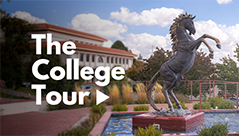WNMU Museum Director Danielle Romero has a chapter in the forthcoming book “Mogollon Communal Spaces and Places in the Greater American Southwest,” published by the University of Utah Press. The chapter, titled “Pipes, Palettes, and Projectile Points: Great Kiva Rituals and Ritual Paraphernalia at the Harris Site,” was coauthored with Professor Barbara Harris of the University of Nevada, Las Vegas (UNLV) and archeologist Ashley Lauzon.
Romero explains that “Our chapter focuses on specific artifacts that were found in kivas and domestic pithouses at the Harris Site, a Late Pithouse period (AD 550-1000) village in the Mimbres Valley. Using our excavation data and ethnographic information from the modern pueblos we discuss the links between ritual performance, household sponsorship, and community integration.”
The chapter, and indeed the entire volume that includes it, began as a presentation for a conference that was cancelled in 2020 due to the COVID-19 pandemic. One of Romero’s co-authors, Roth “has been working on various papers concerning the Harris Site with communal space and integration being a key theme,” said Romero, “She was the principle investigator for the site excavation for many years, and it was the site where I conducted my MA research. The tertiary author and I previously presented and published on some of the artifacts utilized for this chapter, so it was a great way to combine our data and extrapolate more information.”
In addition to serving as WNMU Museum Director, Romero is also completing her PhD dissertation at UNLV with Roth as her faculty advisor. Romero said that she is sure Roth is “a lot more relieved and excited to see [the chapter] finished. We were simultaneously working on a paper published last year on the Harris Site kivas, so we were ready to tackle the chapter.”
According to Romero, the volume in which their chapter will be published “focuses on communal spaces amongst the Mogollon and how they were used for public/non-public ritual and social activities.” The editors of the collection stated that “This volume presents the latest research on the development and use of communal spaces and places across the Mogollon region, located in what is now the southwestern United States and northwestern Mexico. New data demonstrate that these spaces and places, though diverse in form and function, were essential to community development and cohesion, particularly during critical formative periods associated with increasing sedentism and farming, and during comparable periods of social change.”
Other chapters in the book have less direct but still significant ties to WNMU and more specifically to the WNMU Museum’s collections. Romero indicated that the volume includes a chapter about NAN Ranch communal spaces written by Professor Emeritus at Texas A&M University Harry Shafer, who directed the NAN Ranch excavation. The NAN Ranch Collection, housed in the WNMU Museum, is the largest and most complete collection of Mimbres materials in existence from a single prehistoric Mimbres site.
While the NAN Ranch site was excavated between the 1970s and 1990s, Romero indicated that there are still new avenues for research. “Even all these years after that project finished,” she said, “there is still so much to explore.”


